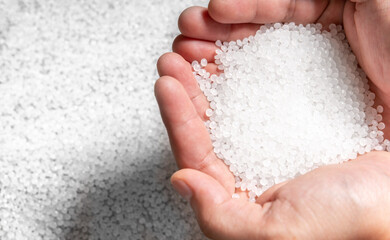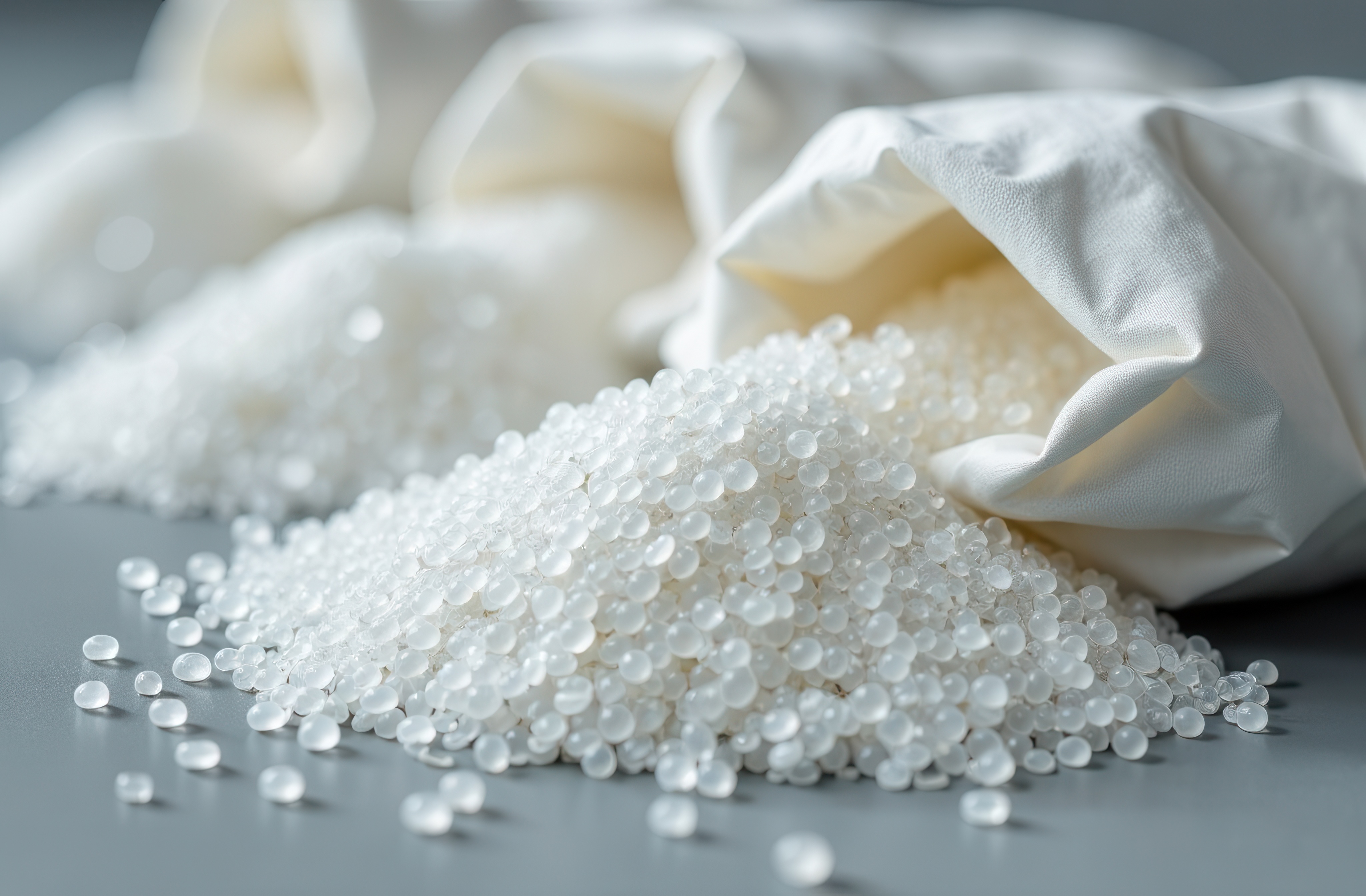
Quick Overview
Polyethylene (PE) is the world’s most common packaging polymer family. Within PE, three workhorses dominate: LDPE (Low-Density Polyethylene), LLDPE (Linear Low-Density Polyethylene), and HDPE (High-Density Polyethylene). Each has a distinct molecular structure that drives performance:
LDPE — Flexible & Clear
LDPE has a branched structure that makes it very flexible, easy to process, and capable of excellent clarity. It’s widely used in film applications like bags and liners where softness, sealability, and optics matter.
LLDPE — Tough & Puncture-Resistant
LLDPE is “more linear,” with short branches that pack efficiently. The result is higher tensile strength and superior tear/puncture resistance at a given thickness. That’s why LLDPE is the backbone of most high-performance stretch films.
HDPE — Rigid & Durable
HDPE has minimal branching, creating a dense, strong, and more rigid material ideal for containers, closures, piping, crates, and applications that demand stiffness and durability. Although not typically used for stretch film itself, HDPE is common in bottles and rigid packaging that your stretch film will secure to pallets.
LLDPE vs. LDPE vs. HDPE — At a Glance
| Feature | LDPE | LLDPE | HDPE |
|---|---|---|---|
| Flexibility | Very flexible; soft hand feel | Flexible with higher strength | Low flexibility; rigid and strong |
| Puncture/Tear Resistance | Good for light/medium duty | Excellent — ideal for stretch films | High stiffness; not a film choice |
| Typical Uses | Bags, liners, overwrap, sealant layers | Stretch film, heavy-duty bags, liners | Bottles, closures, drums, crates, piping |
| Clarity/Optics | Often very clear | Good; depends on blend/additives | Opaque in most rigid applications |
| Recyclability | Widely recyclable where film programs exist | Widely recyclable where film programs exist | Commonly curbside recyclable (often #2) |
| Cost Position | Usually lowest | Moderate | Moderate to higher (rigid goods) |
How to Choose the Right Resin for Your Packaging
1) Define the Load and Risk
Consider load weight, sharp corners, mixed SKUs, and handling frequency. The higher the risk of puncture or shifting, the more you’ll benefit from LLDPE-based stretch films with reinforced tear resistance.
2) Match the Application
- Hand stretch film (general duty): LLDPE blends for toughness; LDPE can assist with cling and optics.
- Machine film (high throughput/edge sharpness): Engineered LLDPE blends with additives for slip, tack, and load retention.
- Bags & liners: LDPE for softness and clarity; LLDPE for extra strength in thinner gauges.
- Rigid containers, closures, drums: HDPE for stiffness, impact, and chemical resistance.
3) Consider Sustainability and Cost
Down-gauging with LLDPE can cut film usage without sacrificing performance. Where available, HDPE rigid packaging is widely collected curbside, and clean LDPE/LLDPE film can be consolidated via store-drop or private recycling partners. Ask us about take-back options in the GTA.
4) Verify with Data
Request technical data sheets and trial samples. Look for puncture force, dart impact, elongation, and load retention metrics for films; and tensile, impact, and environmental stress cracking data for rigid goods. Field testing on your actual pallets is the gold standard.
Real-World: Stretch Wrapping in Action


Whether you’re wrapping by hand or using a semi-automatic/automatic wrapper, resin choice impacts containment force, edge tear behavior, and film memory. If your loads have protrusions, choose an LLDPE-forward film. For smooth cartons and cosmetics display, LDPE-rich films can improve optics and glide.
Get Expert Help — Toronto Stretch Wrap (GTA)
Tell us about your loads, equipment, and goals (cost per pallet, down-gauging targets, clarity, or recyclability). We’ll recommend the right resin blend and film gauge — and provide samples you can test on your floor.
FAQs
Is LLDPE always better than LDPE?
“Better” depends on the job. LLDPE shines in toughness and puncture resistance; LDPE can deliver optics and sealability at attractive cost. Blends often win.
What if my pallets are top-heavy or mixed SKU?
Use an LLDPE-dominant film with higher puncture and cling, and ensure proper wrap pattern (extra wraps at the base and top). Consider a machine film and a pre-stretch carriage if throughput is high.
Can I reduce film usage without risking damage?
Yes. Down-gauging with high-performance LLDPE blends plus optimizing wrap pattern can cut material while maintaining containment. Pilot before rolling out.
How should I compare quotes?
Ask for cost per wrapped pallet at a target containment force, not just roll price. Film recipe, thickness, roll length, and stretch ratio all matter.
